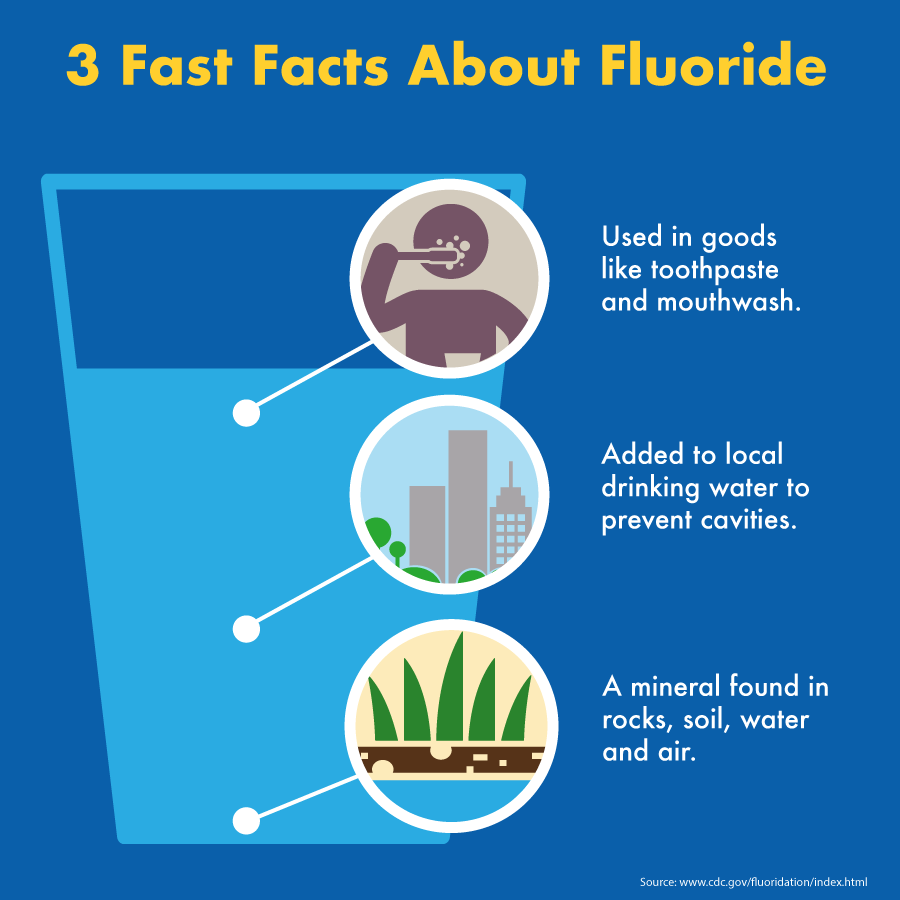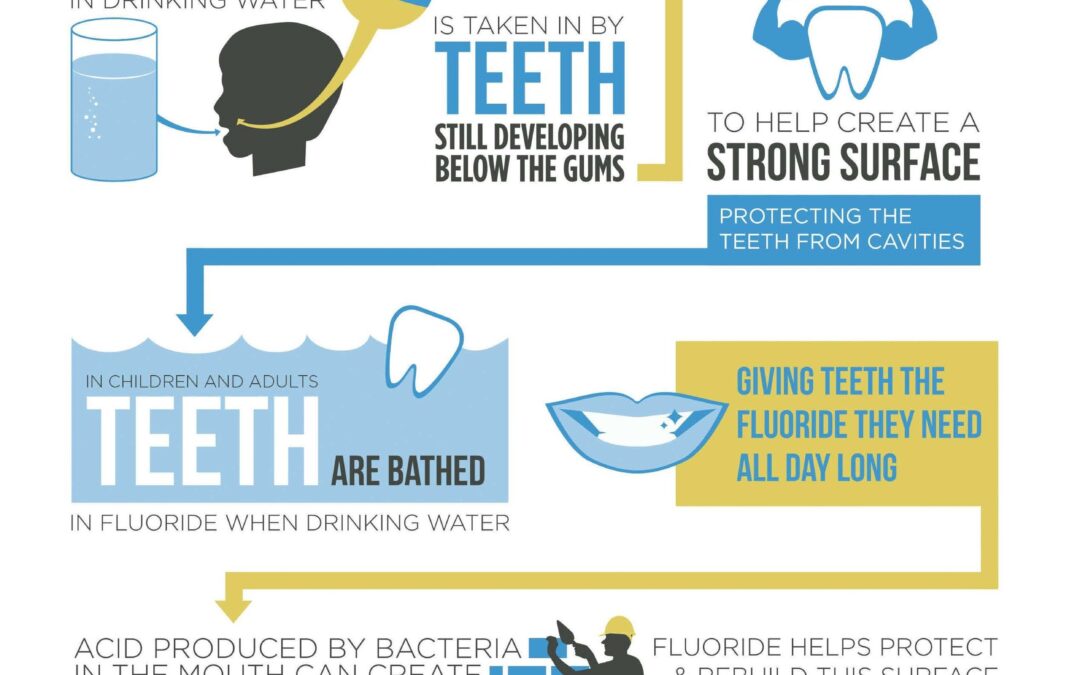Have you ever wondered about the fluoride in your tap water? While it’s easy to overlook, this tiny mineral plays a big role in your daily life.
But what exactly is fluoride, and why is it in your water? More importantly, how does it affect your health and well-being? These questions might have crossed your mind, sparking curiosity and perhaps even concern. Picture this: every time you fill a glass, cook a meal, or brush your teeth, fluoride is there, quietly doing its job.
But is it truly beneficial, or could it be doing more harm than good? Understanding the impact of fluoride in water is crucial because it directly affects you and your loved ones. We’re going to uncover the facts and myths surrounding fluoride in water, providing you with the knowledge to make informed decisions for your health. You’ll discover why some communities embrace it, while others challenge its presence. By the end, you’ll have a clear perspective on fluoride’s role in your life, empowering you to think differently about the water you drink every day. Keep reading to unravel the truth that could change how you view something as simple as a glass of water.

Credit: www.cnn.com
What Is Fluoride?
Fluoride is a term often heard in discussions about dental health. It’s a mineral found naturally in various sources. But what exactly is fluoride, and why is it important?
Fluoride is a simple compound, made from the element fluorine. It appears in water, soil, and many foods. You can find it in toothpaste and mouth rinses too.
Natural Sources Of Fluoride
Fluoride occurs naturally in the environment. Rivers, lakes, and oceans have fluoride. Many vegetables and fruits contain small amounts. Tea leaves absorb fluoride from the soil.
Many communities add fluoride to tap water. This process is called water fluoridation. It’s a public health measure to prevent tooth decay. Studies show it reduces cavities in children and adults.
Why Is Fluoride Important?
Fluoride strengthens tooth enamel. It makes teeth more resistant to decay. It helps repair early stages of tooth damage. Regular exposure to fluoride can keep teeth healthy.
Fluoride In Drinking Water
Fluoride in drinking water has sparked conversations around the world. It’s a topic you might have overheard at a family dinner or seen debated online. But what’s the story behind the fluoride in your glass of water, and why does it matter to you?
History Of Water Fluoridation
Water fluoridation began in the United States in the mid-20th century. The idea was simple: add fluoride to public water supplies to prevent tooth decay. Cities like Grand Rapids, Michigan, were pioneers in this initiative, showing significant reductions in cavities.
Fluoride’s journey into drinking water stemmed from observing communities with natural fluoride levels. These areas had notably healthier teeth. This discovery pushed scientists to consider controlled fluoride levels as a public health strategy.
Think about how innovations often start small and gradually influence larger practices. Fluoridation was no different. What began as a localized experiment is now a common practice in many parts of the world.
Current Global Practices
Today, many countries continue to embrace water fluoridation, but practices vary widely. In the United States, over 70% of the population receives fluoridated water. Australia and Canada also maintain significant fluoridation programs.
However, not every nation follows suit. Parts of Europe opt for alternative methods like fluoridated salt or milk. Some countries debate its necessity due to varying natural fluoride levels in water supplies.
Imagine visiting different countries and experiencing diverse approaches to public health. What if your travels took you somewhere with no added fluoride? Would you notice a difference in dental health practices?
As you ponder these aspects, consider how local policies impact your daily life. How does fluoride in water shape your community’s health? Understanding these practices can help you make informed decisions about your own health and wellbeing.
Health Benefits Of Fluoridated Water
Fluoride in water helps prevent tooth decay and strengthens enamel. It supports overall oral health and reduces cavities. Safe levels of fluoride contribute to healthier teeth for all ages.
Fluoride in water has been a topic of conversation in health circles for decades. Its presence is not just an arbitrary addition but a carefully considered health measure. The benefits it provides, especially in terms of oral health, are significant and scientifically backed. Let’s dive into how fluoridated water can be a game-changer for your dental well-being.Cavity Prevention
Fluoride is like a shield for your teeth. It helps in reducing the risk of cavities, which are tiny holes that can develop in your teeth over time. Imagine not having to worry as much about those painful dentist visits for fillings. In communities where water is fluoridated, studies have shown a significant decrease in the number of cavities among children and adults. Think about how much easier life could be without the nagging pain of tooth decay.Strengthening Tooth Enamel
Fluoride strengthens tooth enamel, the outer protective layer of your teeth. Strong enamel means less sensitivity and more resistance to acids from foods and drinks. Have you ever felt that sharp twinge when eating ice cream or sipping hot coffee? Fluoridated water helps minimize those uncomfortable moments. Strong enamel is your first line of defense against dental problems.Supporting Oral Health In Communities
Fluoridated water is especially beneficial in supporting oral health in communities. Not everyone can afford regular dental care or expensive toothpaste. By simply drinking tap water, people can access a basic level of dental protection. This is particularly crucial in low-income areas where dental health services might be scarce. You might recall a time when a friend’s dental issues impacted their daily life, but fluoridated water can help prevent such scenarios. Have you ever considered how a simple glass of water can contribute to overall well-being? Embracing fluoridated water is a small but impactful step towards healthier teeth and a brighter smile.
Credit: www.culligannation.com
Potential Risks Of Fluoride
Fluoride in water is common for dental health. Yet, some worry about its risks. Understanding these risks can guide safer choices. Explore the potential dangers of fluoride.
Dental Fluorosis
Dental fluorosis affects tooth enamel. Too much fluoride during childhood causes it. Teeth may become discolored or have white spots. Severe cases lead to pits in the enamel. It affects appearance, not health. Yet, it can lower self-confidence.
Skeletal Fluorosis
Skeletal fluorosis impacts bones. Long-term high fluoride exposure leads to this condition. It causes pain and stiffness in joints. Bones may become weak and brittle. Early symptoms mimic arthritis. Severe cases cause movement problems.
Other Health Concerns
There are other health issues linked to fluoride. Some studies suggest thyroid problems may arise. Fluoride might affect IQ levels in children. Concerns about kidney function have been noted. These issues require more research for clarity.
Balancing Benefits And Risks
Fluoride in water helps prevent tooth decay, strengthening dental health. Yet, too much fluoride can cause dental fluorosis. Striking a balance ensures safe and effective oral care for communities.
Balancing the benefits and risks of fluoride in water is vital. Fluoride strengthens teeth and prevents cavities. Yet, too much fluoride can cause health issues. Finding the right balance is key to public health. Communities often debate the best fluoride levels. Understanding these factors helps ensure safe water consumption.Recommended Fluoride Levels
Experts suggest specific fluoride levels in drinking water. The Centers for Disease Control and Prevention (CDC) recommends 0.7 milligrams per liter. This level supports dental health without significant risk. It’s a delicate balance. Too little fluoride can lead to more cavities. Too much can cause dental fluorosis. Fluorosis can create white spots on teeth. It’s important to maintain recommended levels for optimal health benefits.Monitoring And Regulation
Monitoring fluoride levels ensures public safety. Water systems regularly test fluoride concentrations. The Environmental Protection Agency (EPA) sets standards for drinking water. These standards protect against overexposure. Regular checks help maintain safe levels. Public health officials manage and regulate these processes. Community feedback also plays a role in monitoring. This ensures water quality meets safety standards. Effective regulation prevents health risks associated with fluoride. It also ensures the benefits reach the community. Public awareness and education further support these efforts. Understanding the importance of monitoring can lead to healthier communities.Public Perception And Debate
Fluoride in water remains a hot topic. Communities worldwide hold diverse views. Some see it as a public health win. Others express concerns about its safety. This divide fuels ongoing debates and discussions. Understanding both sides is key to forming an informed opinion.
Support For Fluoridation
Many health experts endorse fluoride in water. It helps reduce tooth decay. This benefit is especially important for children. Studies show areas with fluoridated water have fewer cavities. Public health organizations also support this practice. They believe it promotes dental health effectively. For many, the benefits outweigh potential risks.
Opposition And Concerns
Despite support, some oppose water fluoridation. They worry about potential health risks. Concerns range from dental fluorosis to other health issues. Some argue for individual choice in fluoride consumption. They believe people should decide for themselves. Local government decisions often face public pushback.
Influence Of Misinformation
Misinformation plays a role in the debate. False claims spread quickly online. Some sources exaggerate risks without evidence. This leads to confusion and fear. People may distrust credible scientific studies. Accurate information is crucial for informed decision-making. Public education can help clear misconceptions.
Alternatives To Water Fluoridation
Water fluoridation helps reduce cavities and tooth decay. Yet, some people prefer alternatives. Alternatives can be effective and beneficial. They offer varied methods for oral health maintenance.
Topical Fluoride Treatments
Topical fluoride strengthens teeth directly. Dentists often provide these treatments. They apply fluoride gel or varnish to the teeth. This process enhances tooth enamel. It protects against decay. You can also use fluoride toothpaste. Daily brushing with it helps. Mouth rinses with fluoride are another option. They are available over-the-counter.
Dietary Sources Of Fluoride
Some foods contain fluoride naturally. Seafood and tea are good examples. Consuming these foods can support dental health. Prepared foods with fluoridated water also help. Consider using fluoridated salt. It adds fluoride to your diet. Another option is fluoride supplements. Doctors may recommend them for those lacking adequate fluoride.
Future Of Fluoride In Public Health
Fluoride in water plays a key role in dental health, preventing cavities and promoting strong teeth. Public health experts consider fluoride a vital part of safe drinking water strategies. Balancing fluoride levels in communities helps maintain oral health without overexposure risks.
Fluoride in water has long been a cornerstone of public health initiatives, but what does the future hold for this mineral’s role in our well-being? As science and technology advance, so too do our methods for ensuring safe and effective water fluoridation. With the rapid pace of innovation, it’s crucial to consider how fluoride’s role might evolve to meet the needs of future generations. Are we ready for the next wave of advancements in public health?Innovations In Fluoridation
Imagine a world where adding fluoride to water is as precise as tailoring a suit. Emerging technologies are making this a reality. Smart systems are being developed to automatically adjust fluoride levels in water based on real-time data. These innovations aim to ensure optimal fluoride levels, reducing the risk of both dental cavities and overexposure. One exciting development is the use of AI to monitor water quality and make adjustments without human intervention. Wouldn’t it be fascinating if your local water plant operated as efficiently as your smartphone?Research And Developments
Researchers are constantly exploring new ways to enhance the benefits of fluoride while minimizing potential risks. Recent studies focus on understanding how fluoride interacts with other minerals in the body. This could lead to breakthroughs in how fluoride supplements or treatments are designed. Moreover, there’s a growing interest in personalized public health strategies. Could future water systems deliver customized fluoride levels to different neighborhoods based on specific health data? Such developments would require collaboration between scientists, public health officials, and communities. As we gaze into the future, it’s clear that fluoride’s role in public health will continue to evolve. Staying informed and engaged with these changes is essential. What steps will you take to be part of this transformation in public health?
Credit: shop.knowyourh2o.com
Frequently Asked Questions
What Is Fluoride In Water?
Fluoride is a mineral added to public water supplies to help reduce tooth decay. It strengthens enamel and prevents cavities. Many health organizations endorse its use for dental health.
How Does Fluoride Benefit Dental Health?
Fluoride helps in the remineralization of tooth enamel, making it more resistant to acid attacks. It reduces the risk of cavities and promotes overall dental hygiene.
Is Fluoride In Water Safe To Drink?
Yes, fluoride in water is considered safe by health experts when consumed at recommended levels. It has been used safely for decades to improve dental health.
Can Fluoride In Water Cause Health Issues?
Excessive fluoride can lead to dental fluorosis, affecting tooth appearance. However, regulated levels in drinking water are generally safe and beneficial for health.
Conclusion
Fluoride in water sparks much discussion and debate. Some people worry about safety, while others see health benefits. Experts often support its use for dental health. Fluoride can prevent cavities and strengthen teeth. Yet, understanding personal choices remains important. Educate yourself about fluoride levels in your area.
Talk with local health officials if uncertain. Make informed decisions for your family’s wellbeing. Stay aware and ask questions. Knowledge helps in making wise health choices. Remember, each community may have different needs. Always consider local guidelines and expert advice.
Your health matters.

Hasan Al Sarker is a Reverse Osmosis Specialist. He has worked for many years to ensure safe drinking water for all. His research paper has been published in several journals, including Issue, Medium, and Slideshare. He is recognized as a water doctor among specialists though he did not attend medical college.
Besides working as a researcher of reverse osmosis technology, he is also very fancy with the kitchen and cooking. His guides are reading thousands of people every day. As a head of content, he is responsible for all the published articles at RO System Reviews.

